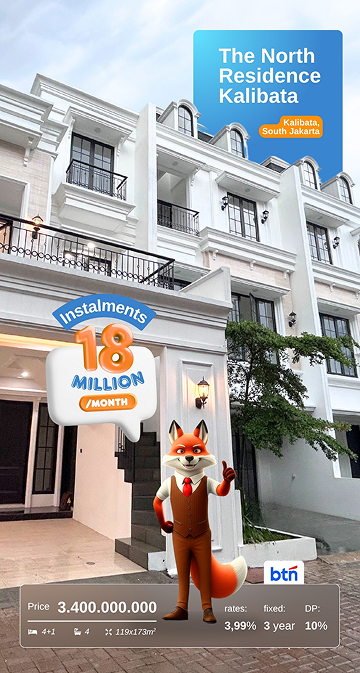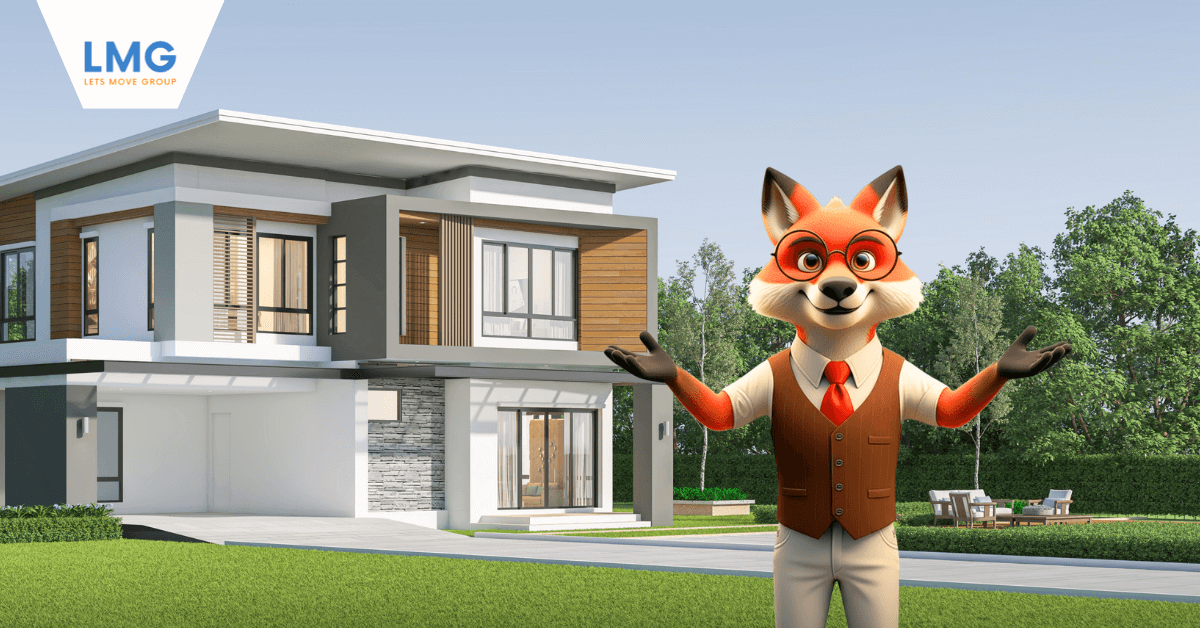Buying a second-hand house through a Home Ownership Credit (KPR) is still a favorite choice for many people in Indonesia in 2025. In addition to more affordable prices, second-hand houses are usually ready to be occupied and are located in a developed environment.
However, the process of applying for a second home mortgage is indeed a little different compared to a new home. Here we will discuss 10 easy ways to apply for a second home mortgage, complete with tips, application requirements, and strategies so that the application for the house you want to buy goes smoothly and is approved by the bank.
Second-Handed Home vs Brand New Home: Which One is Better?
Choosing between a second-hand home and a brand new home is a big decision in the journey of owning a home. Both options have their own advantages and disadvantages, ranging from price, location, building condition, to the legality and financing process. Here is an in-depth comparison of second-hand vs. brand new homes as a consideration before you decide to buy your dream property.
Price and Investment Value
New home prices are generally higher because the condition of the house and building is still prime, the design follows the latest trends, and is usually located in a developing area with modern facilities. Developers also often add a premium to the selling price for additional facilities and strategic locations.
Second homes are usually offered at lower prices, especially if the owner wants to sell quickly. You can get a larger home in a mature location at a more affordable price. However, the price of a second home is highly dependent on the location, age of the building, and physical condition.
Building Condition and Maintenance Costs
The physical condition is still very good, so the initial repair costs are minimal. Most new homes also come with a developer's warranty for repairs within a certain period. However, there is a risk of hidden construction problems that only appear after a few years.
The condition of the building varies greatly depending on the care of the previous owner. There are second homes that are still sturdy and well-maintained, but many need major renovations. Prospective buyers must be prepared with an additional budget for repairs and renovations.
Design and Facilities
Modern design, more functional layout, and using the latest materials and technology. New homes in housing complexes are usually equipped with facilities such as playgrounds, swimming pools, or 24-hour security..
Designs can be more classic or traditional, but many second homes are built on larger plots of land. Public facilities are usually available, but not always as modern as new housing.
Can You Buy a Second Home with a Mortgage?
Buying a used house is very possible with a Home Ownership Credit (KPR) scheme. Banks in Indonesia provide special KPR products for second homes with terms and processes that are almost similar to KPR for new homes.
10 Easy Ways to Apply for a Second Home Mortgage
1. Choose the Right Second Home and Check Its Condition
The first step is to choose a second home that suits your needs and budget. Pay attention to the location, access, environment, and surrounding facilities. After that, do a thorough check of the physical condition of the house, starting from the building structure, roof, walls, electrical installations, water, to the potential for hidden damage such as humidity or termites. If necessary, bring a handyman or building expert so that you don't miss out on major repair costs later on..
2. Check the Legality and Completeness of House Documents
Make sure the home ownership status is clear and free from legal issues. Check important documents such as the Certificate of Ownership (SHM), Building Permit (IMB), the latest Land and Building Tax (PBB), and other required documents. A house with complete legality will facilitate the appraisal process and KPR application at the bank.
3. Negotiate Price with Home Owner
The price of a second-hand house is usually negotiable. Conduct a market price survey in the same location so that you have a reference when bidding. Good price negotiation will benefit you, especially since banks usually only finance 70–80% of the estimated price of the house according to the bank appraisal, not the selling price from the seller.
4. Calculate carefully and simulate the mortgage
Before applying for a mortgage, calculate your financial capabilities. Make sure that the monthly installments do not exceed 30–40% of your fixed monthly income. Use the online mortgage simulation to estimate the amount of installments, tenor, interest, and DP that must be paid. This is important so that your mortgage application is not rejected because it is considered at risk of default.
5. Prepare the Documents Required for a Second Home Mortgage
Each bank has similar document requirements, including:
- Photocopy of the applicant's and spouse's ID cards (if married)
- Photocopy of the applicant's family's card
- Photocopy of NPWP and annual SPT
- Photocopy of marriage/divorce certificate (if any)
- Pay slip or business financial report (last 3 months)
- Employment certificate or business letter
- Bank statement/savings statement for the last 3 months
- Photocopy of house certificate, IMB, latest PBB, and house sale and purchase agreement.
Make sure all original documents and photocopies are clear and complete.
6. Choose the Right Bank and Mortgage Product
Compare mortgage products from several banks, both conventional and sharia banks. Pay attention to interest rates, tenors, provision fees, administration fees, and DP policies. Choose a bank that offers low interest rates, fast processes, and a good reputation in second-hand home mortgage services.
7. Submit a mortgage application to the bank and follow the appraisal process
After choosing a bank, apply for a mortgage by filling out the form and submitting the required documents. The bank will conduct an appraisal process, which is an assessment of the house price by an independent party. The results of this appraisal will determine the amount of credit limit that you can get. Usually, banks only finance 70-80% of the appraisal price, so prepare a DP according to the provisions.
8. Pass BI Checking/SLIK OJK
Make sure your credit history has a good record before applying for a mortgage. The bank will check BI Checking or SLIK OJK to assess whether you have ever been in arrears on credit, credit cards, or other loans. If there is a bad record, the mortgage application will most likely be rejected. Pay all credit obligations before applying for a mortgage.
9. Signing the Credit Agreement Before a Notary
If the mortgage installment application is approved, you will be invited to sign a credit agreement before a notary. At this stage, you also pay the down payment, administration fees, insurance, and notary fees. After the agreement, the house officially belongs to you, and the mortgage installment process for the house begins according to the agreement.
10. Immediately Change Ownership Data and Manage Name Change
After the credit agreement, immediately take care of changing the name of the house certificate to your name. This process is usually assisted by a notary, but you still have to supervise it so that there are no problems later. Also make sure that the data in the PBB and IMB are in your name as the new owner.
Additional Tips for Smooth Second Home Mortgage Application
- Examine all aspects of the house and the legal process.
- A notary, property agent, or mortgage consultant can help smooth the process.
- In addition to the down payment and installments, there are other costs such as renovation, insurance, and taxes.
- Ready-to-use second-hand houses are processed more quickly by banks and reduce the risk of unexpected costs.
- So that the negotiation and document processing process runs smoothly.
Benefits of Applying for a Used Home Mortgage
- Prices are cheaper and negotiable
- The house can be occupied immediately
- The environment is already formed and busy
- The letters are usually complete
- Faster process than buying a new house
Frequently Asked Questions (FAQ)
1. What is the minimum down payment for a second home mortgage?
The minimum down payment (DP) for a second-hand home mortgage usually ranges from 10% to 30% of the house price.
2. Can you get a mortgage for a second home without a down payment?
Yes, usually several mortgage banks provide the option of no down payment (DP) for second homes, but there will be certain terms and conditions that must be met.
3. Can the DP be forfeited if the mortgage is rejected?
Yes, in many cases, the down payment or DP (DP Down Payment) can be forfeited if the KPR (Home Ownership Credit) application is rejected.
4. How long does the process of buying a house with cash take?
The process of buying and selling a house in cash usually takes 1-2 months to complete all stages of the process.
5. What are the costs when buying a second home?
The cost of buying a second-hand house includes several main components such as taxes (BPHTB and PPh), notary fees (AJB, BBN and others), and other additional costs.
Apply for a Second Home Mortgage Easily with Lets Move Group!
Applying for a home loan can be complicated, especially for first-time buyers. With so many banks offering different terms and timelines, it’s important to have a trusted advisor by your side. Lets Move Group offers personalized assistance to ensure your mortgage application is processed smoothly and in line with all legal requirements.
Our experienced consultants will guide you from initial document preparation to signing the final agreement, providing clarity and peace of mind throughout the process. Our team is ready to assist you at every step of your home loan application. Contact Lets Move Group today!














